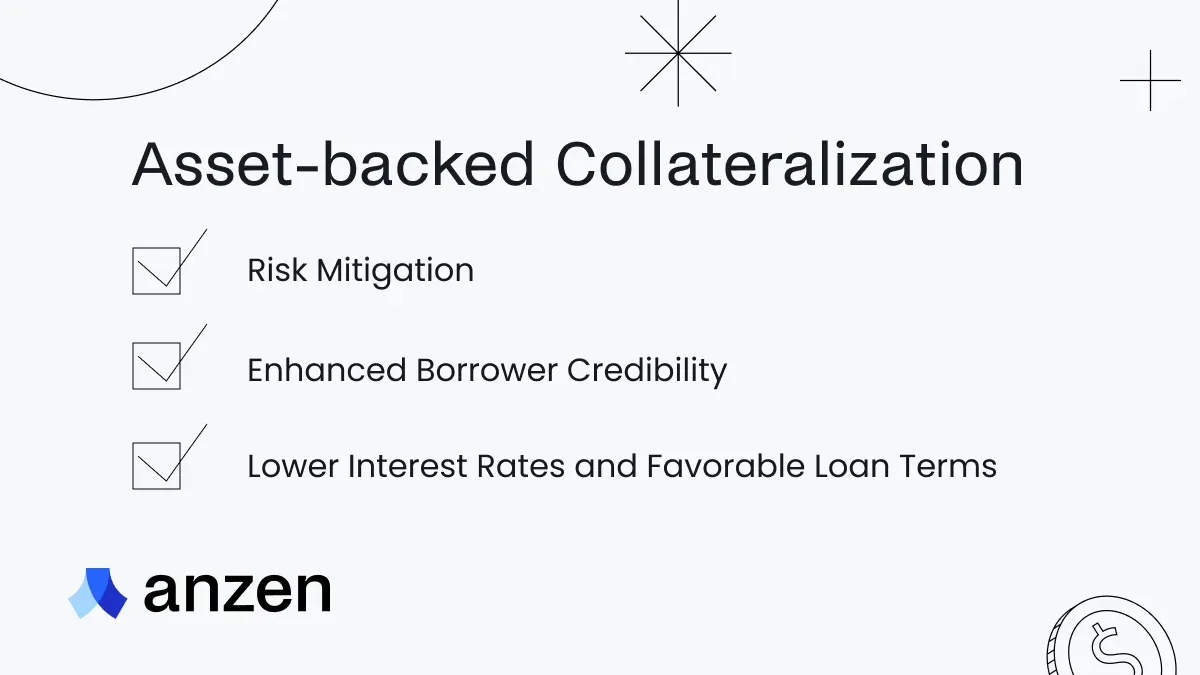· 3 min read
Collateralization in Private Credit Markets: Unlocking Security and Risk Mitigation
Asset-backed Collateralization reduces risk and offers lower interest rates.
Asset-backed Collateralization reduces risk and offers lower interest rates.
Collateralization plays a crucial role in private credit markets, providing lenders with an added layer of security and mitigating risks associated with lending. It is the practice of providing valuable assets to secure a loan. In this post we will shed light on how collateralization works in the context of private credit, its significance for lenders and borrowers, and the mechanisms involved in safeguarding investments.
Understanding Collateralization:
Collateralization involves the provision of assets by a borrower to secure a loan, thereby reducing the lender’s risk exposure. In private credit markets, collateral serves as a form of assurance that provides lenders with a recourse option in the event of borrower default or non-payment. By accepting collateral, lenders have an asset-backed claim that can be liquidated to recover outstanding debt.
 The benefits of Asset-backed Collateralization include risk mitigation, enhancing borrower credibility, and lower interest rates and favorable loan terms.
The benefits of Asset-backed Collateralization include risk mitigation, enhancing borrower credibility, and lower interest rates and favorable loan terms.
Benefits of Collateralization:
- Risk Mitigation: Collateralization helps mitigate the risk associated with lending. In the event of borrower default, the lender can recover a portion or all of the outstanding loan amount by liquidating the collateral. This provides a safeguard against potential losses, making private credit a more secure investment option.
- Enhanced Borrower Credibility: Collateralization improves the borrower’s credibility by demonstrating their commitment to the loan and their willingness to offer valuable assets as security. This instills confidence in lenders, facilitating access to credit even for borrowers with less established credit histories or unique circumstances.
- Lower Interest Rates and Favorable Loan Terms: Collateralization allows lenders to offer more favorable loan terms, including lower interest rates, longer repayment periods, or higher loan amounts. The reduced risk associated with collateralized loans incentivizes lenders to provide more competitive terms, benefiting borrowers.
Mechanisms of Collateralization:
- Asset Evaluation: Lenders assess the value and quality of the proposed collateral. This evaluation ensures that the collateral has sufficient value to cover the loan amount and that it can be easily liquidated in case of default.
- Security Agreements: The lender and borrower enter into a security agreement that outlines the terms of collateralization. This agreement establishes the rights and obligations of both parties, including details regarding the collateral, its valuation, and the conditions for its release.
- Collateral Management: Proper management of collateral is crucial to protect the interests of both lenders and borrowers. This may involve periodic valuation updates, maintenance of the collateral’s condition, and adherence to documentation and release procedures.
- Collateral Liquidation: In the event of borrower default, the lender can enforce its rights to the collateral and initiate the process of liquidation. The proceeds from the sale of the collateral are then used to recover the outstanding debt.
Collateralization serves as a cornerstone of private credit markets, providing lenders with a mechanism to mitigate risk and secure their investments. By offering tangible assets as collateral, borrowers gain access to credit on more favorable terms, while lenders benefit from enhanced security and reduced risk exposure. Understanding the dynamics of collateralization empowers both lenders and borrowers to make informed decisions and navigate the private credit landscape with confidence.
